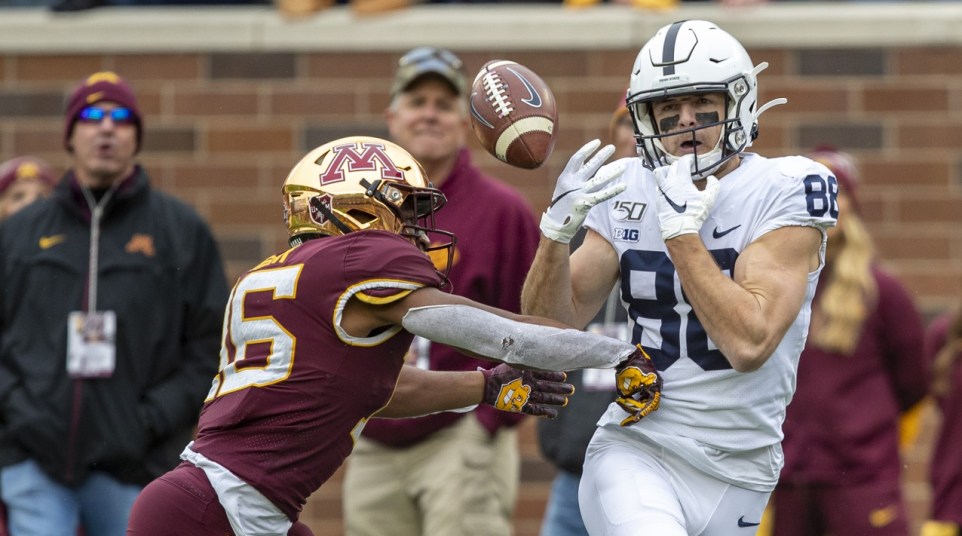
Better or Worse? Previewing Minnesota's defense in 2021
Minnesota’s defensive prospects this year are a conversation in good news, bad news and recency bias.
Inspired defensive performances during the final couple games of a COVID-19-sideswiped 2020 season can’t sugarcoat a simple fact that has many Golden Gophers fans concerned going into this fall.
The boys in maroon and gold were downright out-classed by even mediocre offenses last year.
That’s the bad news. The good: The Gophers gained a ton of valuable experience while taking their lumps.
What remains to be seen is whether essentially the same unit that ranked 10th in the Big Ten in total defense learned enough to be dangerous once again. That 2019 performance that had many folks in Dinkytown starting to smell roses seems like a long time ago.
With that, it’s time for another round of Better or Worse.
Pressuring the QB: Better
The only way is up.
Right?
Minnesota’s 8 sacks — a little over 1 per game — ranked 115th out of 127 active FBS teams in 2020. Its defensive line was often gummed up at the line of scrimmage, and its linebackers drew much ire over the course of the season for being woefully out of position (more on that in a later, run-related category).
And yet the Gophers aren’t bereft of returning talent. Defensive end Boye Mafe (4.5 sacks last season) is an athletic specimen. Fellow redshirt senior Esezi Otomewo can get to the backfield when he commits to it. Coaches have been high on will linebacker Braelen Oliver’s motor for a while.
What might help even further? Some creativity from coordinator Joe Rossi. Sending nickelback Justus Harris and others off the edge more often might help this struggling area of the defense.
Run defense: Better
We’re counting on marginal gains by virtue of experience in this category, too. But first, to rehash …
Perhaps the most dramatic dropoff for Minnesota from a magical 2019 season to last year was its ability — or inability, rather — to stop the run. Two seasons ago, the Gophers ranked 23rd nationally, allowing 122.38 yards per game.
Last season? 102nd. The carnage, blow-by-blow:
- Michigan: 256
- Maryland: 281
- Illinois: 181
- Iowa: 235
- Purdue: 125
- Nebraska: 197
- Wisconsin: 175
The reasons are varied. A lot of folks in Minnesota point to less-than-inspired linebacker play. While Oliver, Mariano Sori-Marin and the rest of the defense’s middle tier certainly underperformed, Rossi’s scheme only works when the big guys up front are clogging up running lanes. Too often, Sori-Marin and company felt like they had to over-extend themselves on plays because holes opened up as soon as the ball was snapped.
Call that lack of trust, lack of discipline or both, but this is an issue that rests with the entire front seven. And with most of their key contributors back, the Gophers will have had an entire offseason to work on a remedy.
Pass defense: Even
It’s hard to replace the reliability of Benjamin St-Juste, but at the opposite corner, Minnesota returns Coney Durr. Not only is Durr a lockdown defender, but he’s gotten better and better at making plays on the ball over the course of his career.
Minnesota has been a difficult team against which to string passes together lately. That trend should continue with Durr and safeties Tyler Nubin and Jordan Howden back in the fold.
That other corner vacated by St-Juste — a 3rd-round pick by the Washington Football Team — is one of the defense’s biggest question marks heading into fall camp.
Special teams: Better
The Gophers added Louisiana Monroe transfer Daniel Sparks to bolster a punting room that ranked last in the Big Ten last year but did land 12 inside the 20-yard line.
Sparks averaged 44.6 yards for the Warhawks and also booted 33 kickoffs with 6 touchbacks. He’ll compete with Mark Crawford (37.6 yards on 17 punts) for duties this fall.
Overall: Better
Which brings us back to where we began. It’s hard to imagine Minnesota being as bad defensively as it was a year ago.
Remember, this is a team 2 years removed from finishing 26th defensively in ESPN’s SP+ rankings. A lot of the talent has turned over, yes, but the Gophers don’t go after a ton of 4- and 5-star recruits. They rely on development, and there were plenty of learn-on-the-job opportunities for a youthful group last season.
Can it pay off? That could go a long way in determining the long-term trajectory of this program, believe it or not.
What P.J. Fleck has built so far is impressive. But he inherited a good amount of defensive talent from the Jerry Kill/Tracy Claeys era. If Fleck and his staff can bring players along as well as their predecessors did, watch out.
If not, Minnesota will remain somewhere in the monotonous middle — especially on the defensive side of the ball.